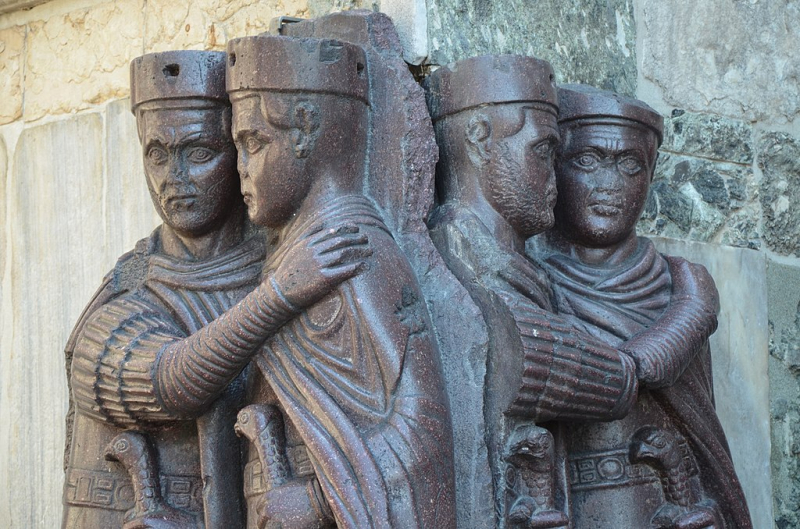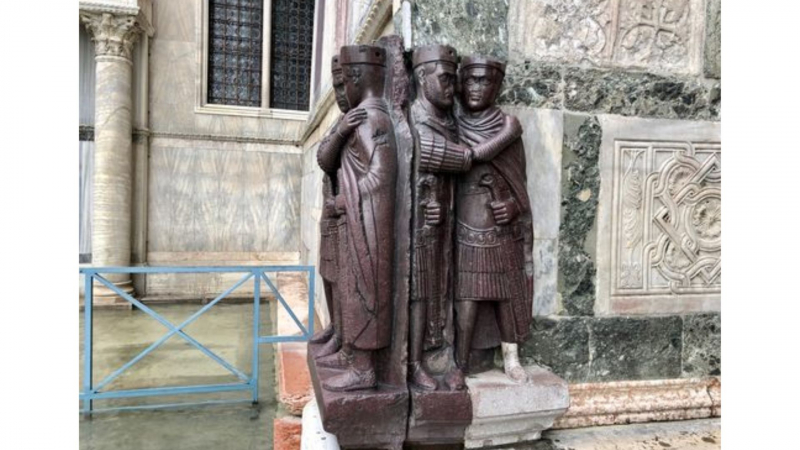Portrait Of The Four Tetrarchs
The Four Tetrarchs Portrait is another well-known sculpture created during the Roman era. It was in the Piazza San Marco and depicted four statues of Roman emperors standing close to one another. It was built circa 300 AD. Porphyry, a stone with a purple-red hue and high value in the Roman era, was used to build the structures. The Tetrarchy, which was established by Emperor Diocletian to put an end to civil warfare and foreign invasion, served as the model for the design.
Emperor Diocletian considered separating the Roman Empire into two distinct regions, the Western and the Eastern, and appointing separate rulers to each. Rome's territory growth necessitated partition because only one king could have control of the entire empire. One Augustus, the senior emperor, and one Caesar, the junior emperor, would preside over each portion. The four statues were originally created as two pairs of Augusti and Caesars, but they all had the identical appearance.
There is debate over the identities of these sculptures and where they should be placed, although it has been suggested that the Eastern and Western emperors should each form a pair, with the senior augustus and junior caesar making up each pair. Another possibility is that the two Caesars and the two Augusti are shown in different pairs. They could be a dynastic branch of the Constantinian dynasty, according to a third, more established view.












